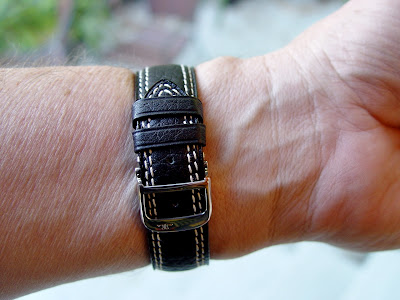WIRES
I'm prepared to admit this is an unconventional collection. But any tool lover will know what I am talking about here. In fact wires are tools that carry electrical signals. Wires are what you need to be a miracle-worker - to hook up DVD, TV, computer, home automation, etc. You can't do it with string, rope, or duct tape.
Power wires (also called extension cords) extend electrical current from the wall socket to the electrical device. Many of mine are already in use because we don't have many outlets in the walls of each room. We recently re-wired the feed from the power company and the circuit breaker panels, but not to all our rooms. The photo shows the special cords, with 90-degree turned ends, or flat ends to fit behind a bookcase, etc. I love it when people see these and say "I wish I had one of those!"
Foreign power wires and adaptors for England, France, Germany, etc. fill up one segment of my wires collection. I don't travel as often as I used to, but it's still necessary to have some of these special wires, otherwise your regular wires can't do their duty.
The green wires carried the signal to my first set of speakers. (Why yes, I do still have those speakers - when you buy the wood and cloth, then design, build, finish and wire them - you keep them!).
Apple Wires are not always specific to Apple computer equipment, but Apple has wisely stuck with this white-wire branding, and it's easy to tell your Apple cables and adaptors from the rest of the
Network or CAT 5 Cables are almost passe nowadays, what with wireless routers. But I'm willing to bet that most of us are not on the cloud yet, and we all have a few of these around the house or office. I've got several dozen snaking around my basement, even though I use a wireless router, because cables are faster and more reliable when streaming large audio and video files.
USB cables are ubiquitous nowadays. I have all sorts - short ones, long ones, cables for cameras, phones, hard drives, extensions, voltage tappers, PC keyboard to USB, etc. Maybe there are 20 spares, not counting the ones in use.
Firewire cables were used to carry signals to printers and big drives, and are now at the end of their lifecycle. I probably ought to toss them out but some are so beautifully braided and feel so nice - they almost make me want to buy some old drives so I can use them again.
Telephone wires are also approaching the end of their lifecycle in my house, but I have these cables and adaptors from 20 years ago when I first set up my home office with 3 telephone lines. Notice the white Apple phone cords in the center? On the left is a credit-card-sized rewinding phone cable for travelers needing to hook their laptops to a telephone modem.
Test Leads are the good wires. The tool wires. The jumper wires with alligator clips. I've owned and used these particular wires for 40 years. (Yes, my middle names used to be Radio and Shack.) They carry any kind of electrical current or signal from points A to B when you don't have the proper adaptor or you just want a temporary connection. Yes, it is possible to melt them, cut them up in the fan blades of the car, or get shocked using them. I've done all that, and more. I bought the same kind again. So they are my partners and friends. The wires on the left are alternate leads for my Fluke voltmeter and other testers. The main leads are connected to the testers, of course.
I have lots more wires. I've spared you the boredom of all the voltage adaptors, converters, phone chargers, etc. etc. They accumulate - I don't collect them. And I don't mind throwing out one or two.
I'm excluding TV wiring, coaxial, HDMI, optical, etc. Not that I don't have some of those cables, but I don't care about TV very much, and as a result I really don't care much about those signal carriers. Besides, they're all used up on the entertainment center, which has a door behind it so I needn't get on my knees and climb around while messing around with my wires.
Do I have a collection of wires? Heck yes.
PS - I've got to put all my wires away now - but you can go here and read more.

























































